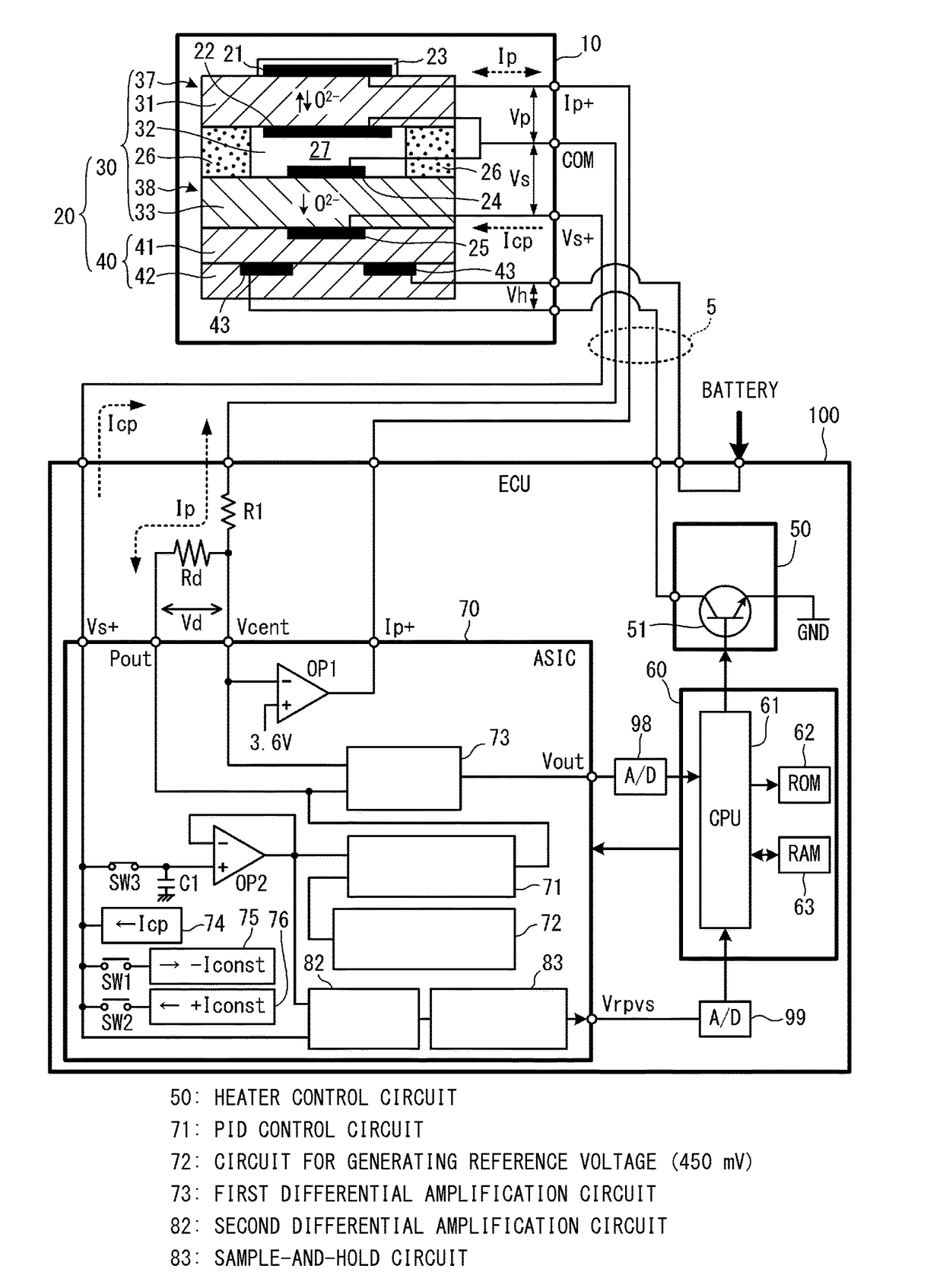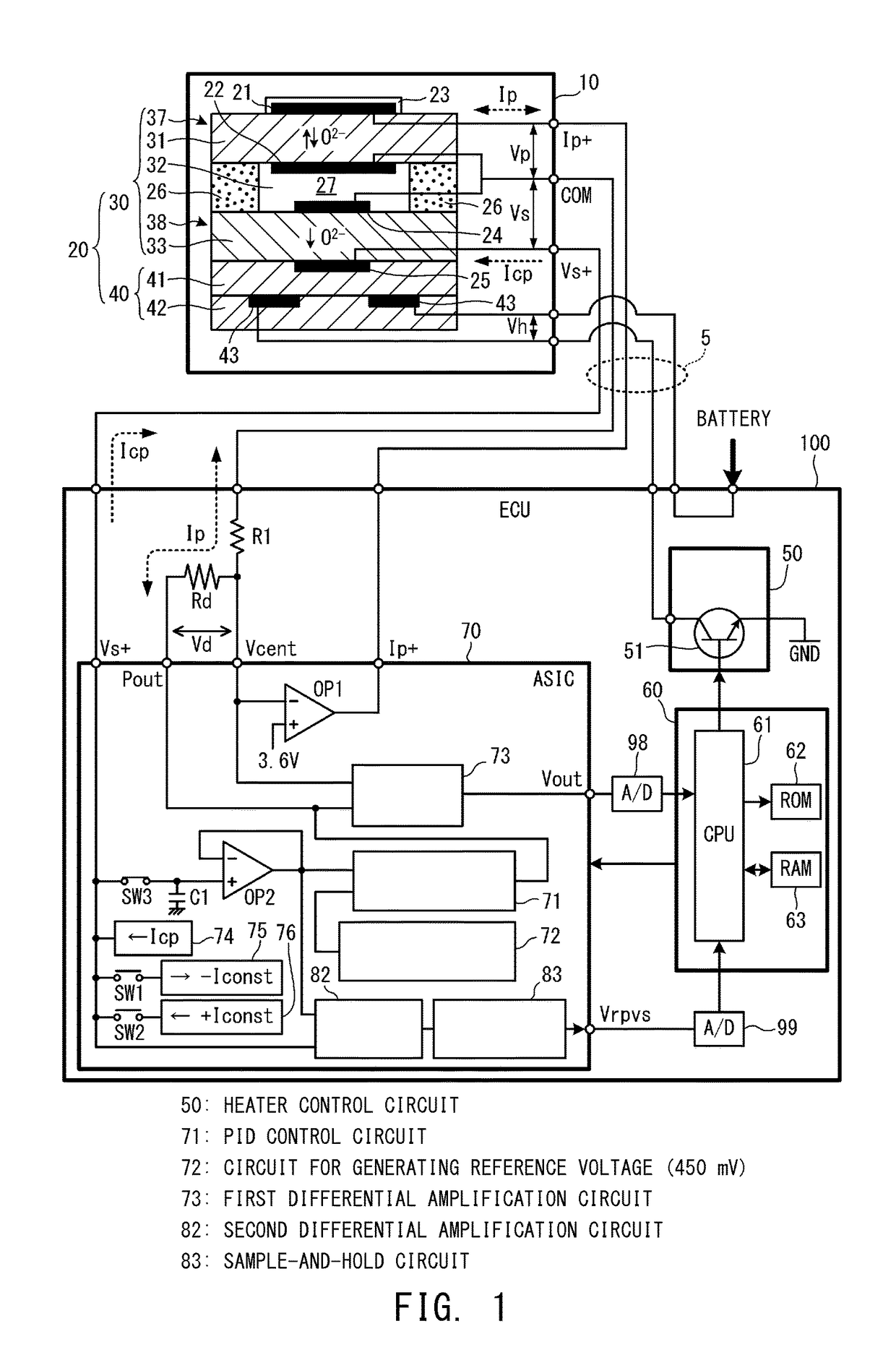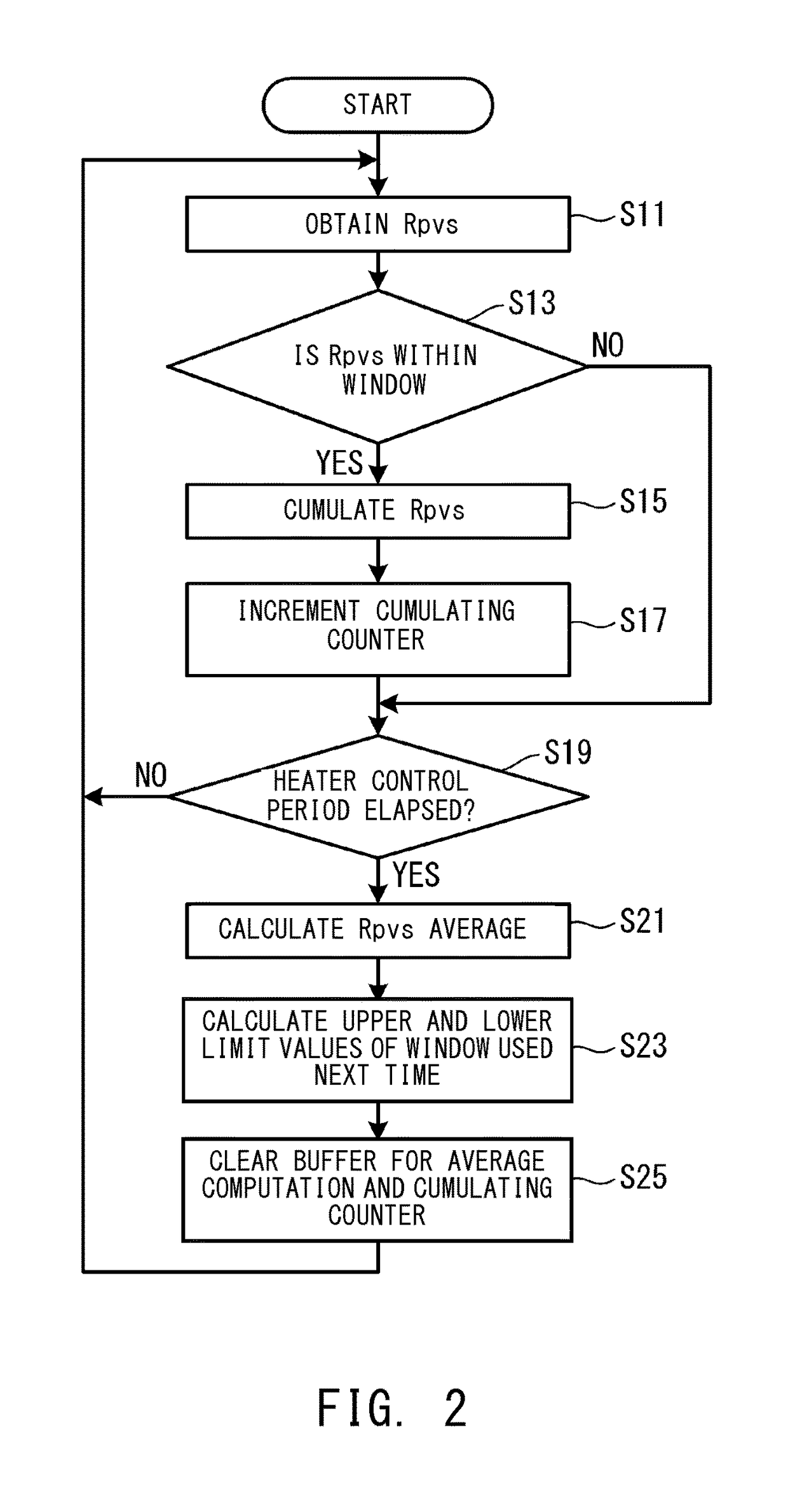Heater control apparatus for gas sensor
a gas sensor and control apparatus technology, applied in the field of heater control apparatus, to achieve the effect of accurately obtaining the average of element resistance, accurate average of element resistance values, and simplified processing
- Summary
- Abstract
- Description
- Claims
- Application Information
AI Technical Summary
Benefits of technology
Problems solved by technology
Method used
Image
Examples
first embodiment
[0027]In a first embodiment, the gas sensor is a full-range air-fuel-ratio sensor 10, and the heater control apparatus is an electronic control apparatus (ECU) 100 of an automobile. The configurations of the full-range air-fuel-ratio sensor 10 and the ECU 100 will be described with reference to FIG. 1. Notably, since the full-range air-fuel-ratio sensor 10 has a known configuration, the details of its structure, etc., will not be described, and its schematic configuration will be described below.
[0028]The full-range air-fuel-ratio sensor 10 shown in FIG. 1 is a sensor which is attached to an exhaust passage (not shown) of an engine of an automobile and which detects the air-fuel ratio of exhaust gas flowing through the exhaust passage based on the oxygen concentration of the exhaust gas. The full-range air-fuel-ratio sensor 10 has an unillustrated housing and a narrow, elongated plate-shaped sensor element 20 held within the housing. The full-range air-fuel-ratio sensor 10 has a plu...
second embodiment
[0061]In the second embodiment, the CPU 61 performs the Rpvs computation processing to thereby obtain the element resistance (Rpvs) of the Vs cell 38 a plurality of times during each period (PWM control period) within which the heater 40 is energized one time. The CPU 61 calculates the average of the Rpvs values (the Rpvs average) for this PWM control period after excluding two Rpvs values whose differences (deviations) from the Rpvs average obtained in the last control period are the largest and the second largest and on which noise may be superimposed. Noise is likely to be generated when energization of the heater 40 is started or stopped, and there is a possibility that noise is superimposed on two of a plurality of Rpvs values obtained during a single PWM control period. In some cases, both the Rpvs value on which noise generated as a result of starting energization of the heater 40 has been superimposed and the Rpvs value on which noise generated as a result of stopping energi...
PUM
| Property | Measurement | Unit |
|---|---|---|
| voltage | aaaaa | aaaaa |
| reference voltage | aaaaa | aaaaa |
| temperatures | aaaaa | aaaaa |
Abstract
Description
Claims
Application Information
 Login to View More
Login to View More - R&D
- Intellectual Property
- Life Sciences
- Materials
- Tech Scout
- Unparalleled Data Quality
- Higher Quality Content
- 60% Fewer Hallucinations
Browse by: Latest US Patents, China's latest patents, Technical Efficacy Thesaurus, Application Domain, Technology Topic, Popular Technical Reports.
© 2025 PatSnap. All rights reserved.Legal|Privacy policy|Modern Slavery Act Transparency Statement|Sitemap|About US| Contact US: help@patsnap.com



